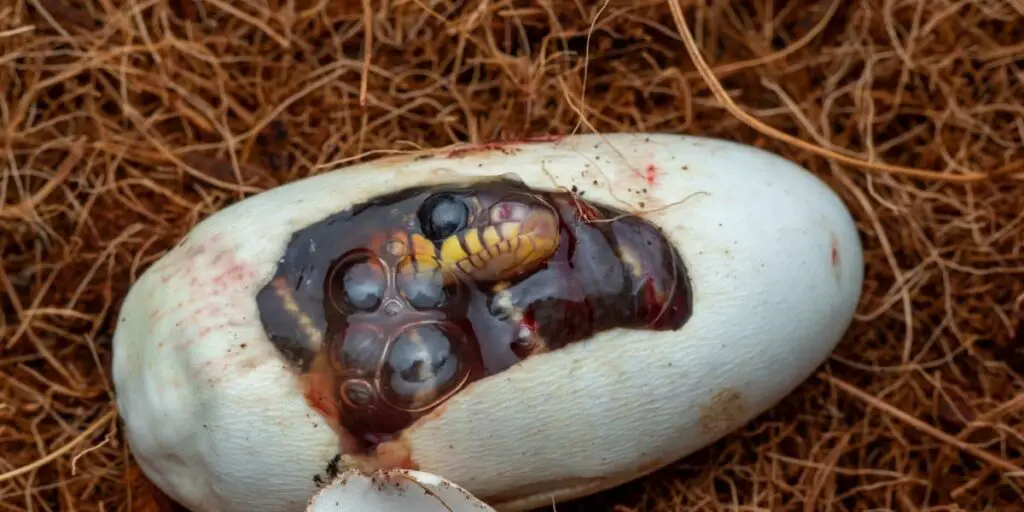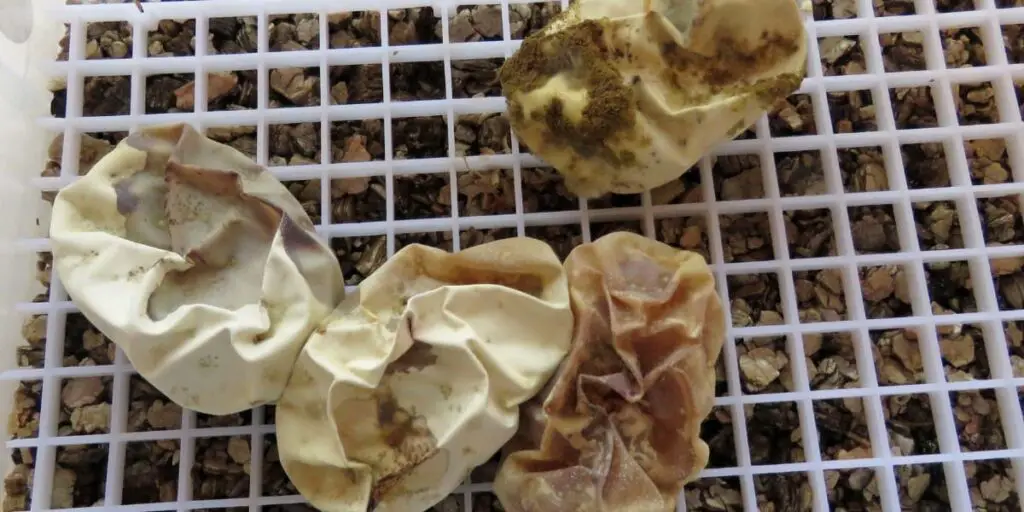Snakes are commonly found throughout the world – from North America to Europe, Africa to Australia, and everywhere in between. In fact, the only place where you won’t find these slithery creatures in Antarctica.
If you find snake eggs in your backyard, the best thing that you can do is put them back where you found them. It is also important not to mess with the eggs or move them around too much. It is likely that you stumbled across them accidentally, so also check that they are not damaged, if you can.
In this post, we are going to be looking at how you can identify a snake egg, where snakes lay their eggs, and how to handle the situation should you find that a mother snake has turned your yard into her personal nursery.
Where Do Snakes Lay Their Eggs?
Snakes lay their eggs in the ground but they are not very fussy about where this is. Unlike some animals that spend a lot of time finding the right place and preparing for the arrival of their precious eggs, the snake puts a lot less thought into the process.
The female snake can store sperm in her body for as long as five years, so if she isn’t feeling particularly maternal after mating, she might save the sperm for when she is ready.
Once she has successfully fertilized her eggs, she will carry them for between 45 and 90 days, depending on the species. In the main, it usually takes around 60 days for her to lay.

When she is ready, she will find a suitable hole in the ground and deposit her eggs inside. If this happens to be your backyard, then so be it. The snake does not mind whether she lays in soil, sand, or even a hole that is covered with leaves.
Depending on the species, the mother snake may still be nearby until the eggs hatch but for the most part, snakes do not guard their eggs once they have been laid. The main species that remain with the eggs are pythons.
How Do I Know If They Are Snake Eggs?
One of the most obvious giveaways that an egg belongs to a snake or any other type of reptile for that matter, is that unlike the hard shell of a bird egg, snake egg shells are much softer.
While we wouldn’t encourage handling the eggs unnecessarily, snake eggs have a slightly leathery texture as opposed to the smooth texture of bird eggs that we are used to feeling.
Furthermore, a snake egg will be more oblong in shape, and depending on your location, it may take on a completely different shape altogether. For example, some African snakes lay eggs that are shaped more like ginger roots.
In terms of color, the snake egg will normally be off-white; some people have described them as looking like giant tic tics!
The size of the snake egg will largely depend on the species. There are some small snakes whose eggs are just an inch, whereas larger species might lay eggs that are five inches or larger.
What Do I Do With The Eggs?
If you are digging in your garden and stumble upon a nest of snake eggs, you should try not to disturb them. Picking the eggs up and moving them could cause damage to the embryos inside and even cause them to die.
One of the most common ways of finding eggs in the garden is when a small child is digging and comes across them. For this reason, it is important to teach your children the importance of leaving them alone should they ever find them. This is especially important if you live in an area where snakes are prominent.
However, there may be some instances where it is not possible to replace the snake eggs, so you should take care to relocate them.

One of the best ways to do this is to place the eggs into a container, and if you can, place them exactly the same way that you found them on the ground. You can then cover the container.
You can use a wet tissue to cover the eggs and this will also serve to keep them warm since drying out would cause them to die.
It is also important to place any cracked eggs into the container since there is a chance that they can be rescued – it’s only fair to give all the baby snakes a chance.
You can now contact your local animal welfare organization. This will vary from country to country but you will be able to find the right contact information online.
What If I Find A Nest Of Live Snakes?
Snake eggs usually hatch in around 45 days, sometimes a little longer, so if they have not long emerged, you may find a nest of babies. Furthermore, there are some species of snake that do not lay eggs but rather give birth to live young. The rattlesnake is one of the most common examples of this.
It is a good idea to contact an animal welfare organization that can come and remove the snakes and relocate them to somewhere safer. If there is any chance that the snakes may be venomous, it is vital that you do not attempt to handle them yourself.
One of the most common misconceptions about snakes is that babies are not dangerous but this is not true. If it is a venomous species, it can be dangerous from birth.
Conclusion: Snake eggs in your backyard
Snakes are incredible creatures and humans have lived alongside them for many thousands of years. They inhabit almost every corner of the globe so it stands to reason that from time to time, you may discover a nest of eggs in your backyard.
It is important not to disturb the nest but if you must, or if the area has become damaged, you can attempt to save the eggs and contact a wildlife organization that can deal with them and ensures that the babies are kept safe until they hatch.
- Are Garter Snakes Friendly? Here’s What You Need to Know
- Ball Python Continually Opening Mouth. Causes and Solutions
- Do Ball Pythons Live Underground? Exploring the Natural Habitat of Ball Pythons
- Do I Need to Mist a Ball Python Tank? A Clear Answer
- Ball Python Body Language: Understanding Your Pet’s Nonverbal Communication




